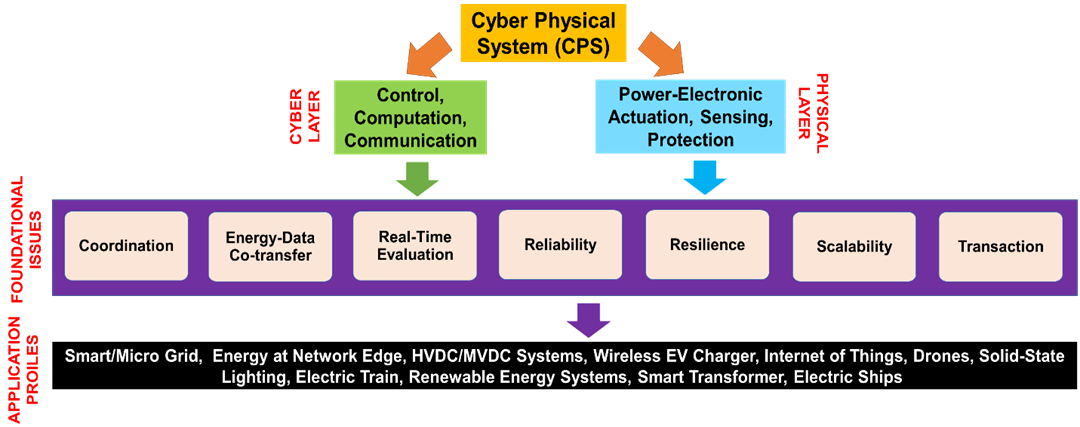Mazumder works on coordination of power-electronics, cyber-physical systems
Mazumder works on coordination of power-electronics, cyber-physical systems

Professor Sudip K. Mazumder, along with about two dozen other leading electrical engineers from distinguished programs around the world, has published what is likely the first comprehensive review covering the confluence of power electronics and Cyber-Physical Systems (CPS).
Power electronics, since the field’s inception over 100 years ago, deals with the design, control, and conversion of power in its electric form. This includes transmitting electricity thousands of miles across power lines, or connecting devices at the edge of the grid. CPS, or smart systems, combine physical, human, and digital components that promise increased efficiency and interaction between computer networks: renewable energy, smart grid, electrical vehicles, high speed trains, and ships.
“Increasingly, there is a need to coordinate a multitude of such power-electronic systems over a cyber system for smart, efficient, economic, reliable control and management of energy,” Mazumder said.
A newer feature of power electronics is the integration of the cyber layer of control, communications, and computing with the physical semiconductor devices and circuit components. This helps develop smart power solutions for the Internet of Things (IoT) and fast charging for electric vehicles, for example.
With the goal of decarbonizing energy production, power electronics are a key way to extract green energy from renewable sources. The balance between energy supply and demand must be maintained, and the cyber controls of power electronics can smooth out the intermittent nature of the supply of renewables reaching the grid.
While this security integration can help achieve energy sustainability and make the energy system more resilient, concerns linger that an increased dependence on such systems could add challenges, such as vulnerability to software bugs or security issues. The authors of the paper suggest advanced techniques, such as robust and intelligent control, digital relays, and direct current circuit breakers to mitigate risks.
Another challenge—given the massive number of IoT devices that monitor structural health, logistics, security, health care, and agriculture—is the limited available frequency spectrum shared by all devices. Current research into full-duplex communications, where an antenna can simultaneously send and receive signals at the same time and on the same frequency band—something previously thought to be impossible—hold promise to increase efficiency. Also, a new approach to integrating power and data for packetized transfer, and a novel approach to need-based energy transfer have been outlined to address these issues.
“The topics presented in the paper include novel power-distribution architectures, protection techniques considering large renewable integration in smart grids, wireless charging in electric vehicles, simultaneous power and information transmission, multi-hop network-based coordination, power technologies for renewable energy and smart transformer, CPS reliability, transactive smart railway grid, and real-time simulation of shipboard power systems,” Mazumder said. “It is anticipated that the research trends presented will provide a timely and useful overview to power-electronics researchers.”
The paper, A Review of Current Research Trends in Power-Electronic Innovations in Cyber–Physical Systems, appeared in the January, 2021 issue of the IEEE Journal of Emerging and Selected Topics in Power Electronics.